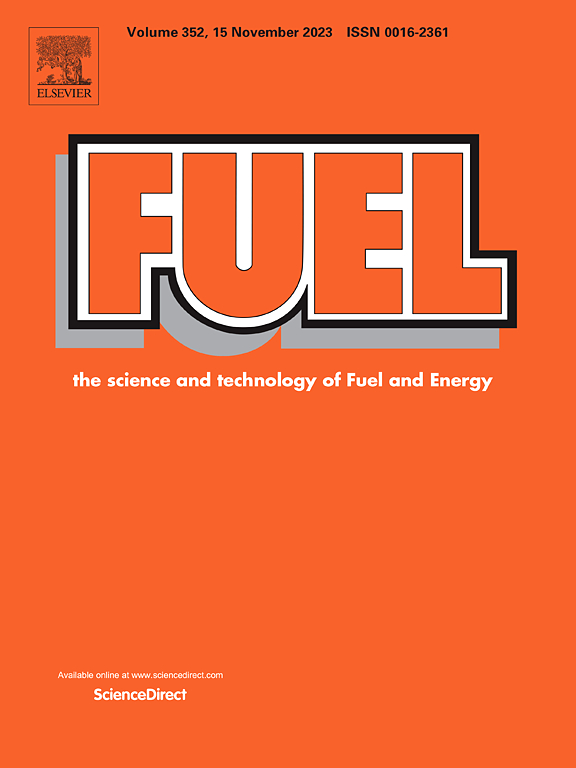Direct numerical simulation studies of spray jet flames in hot vitiated crossflow
IF 6.7
1区 工程技术
Q2 ENERGY & FUELS
引用次数: 0
Abstract
In the present study, spray jet flames in hot vitiated crossflow were investigated using three-dimensional direct numerical simulations (DNS). The dispersed droplets were tracked based on the Lagrangian framework, while the continuous gas phase was solved in an Eulerian way. The spray jets were injected perpendicularly into vitiated crossflow. A reduced two-step kerosene/air reaction mechanism was used as the chemistry model. Three cases were simulated with different droplet sizes and velocities, while the global equivalence ratio was fixed at unity. In the cases with large droplets, two flame branches on the windward side were identified, including the inner windward flame, which is close to the center jet, and the outer windward flame, which is near the crossflow. The heat release rate for the leeward branch of the flame is relatively low compared to that for the windward branch in all cases. Pocket-like leeward reaction zones were observed in the cases with large droplets. The species budget analysis was employed to characterize the flame stabilization mechanism. Auto-ignition plays a key role in the stabilization of the windward flame for the case with small droplets. In contrast, for the cases with large droplets, the inner windward flame is stabilized mainly by flame propagation, and in the outer windward flame, auto-ignition is prevailing. The combustion modes were examined. It was shown that the contribution of premixed combustion decreases with increasing droplet size and velocity, and non-premixed combustion prevails in the cases with large droplets. Strong droplet/flame interactions were observed in the DNS. It was shown that for the cases with large droplets, the complex motion and evaporation behaviors of droplets injected from different locations lead to the formation of the two flame branches on the windward side. Particularly, droplets injected near the hot vitiated crossflow evaporate quickly and tend to follow the jet, resulting in the formation of the inner windward flame branch. In contrast, droplets injected close to the jet center evaporate slowly and are able to penetrate into crossflow, feeding the outer windward flame. Large droplets, particularly those with a high velocity, can survive after leaving the outer windward flame branch, which promote the wrinkling of the flame.
求助全文
约1分钟内获得全文
求助全文
来源期刊

Fuel
工程技术-工程:化工
CiteScore
12.80
自引率
20.30%
发文量
3506
审稿时长
64 days
期刊介绍:
The exploration of energy sources remains a critical matter of study. For the past nine decades, fuel has consistently held the forefront in primary research efforts within the field of energy science. This area of investigation encompasses a wide range of subjects, with a particular emphasis on emerging concerns like environmental factors and pollution.
 求助内容:
求助内容: 应助结果提醒方式:
应助结果提醒方式:


